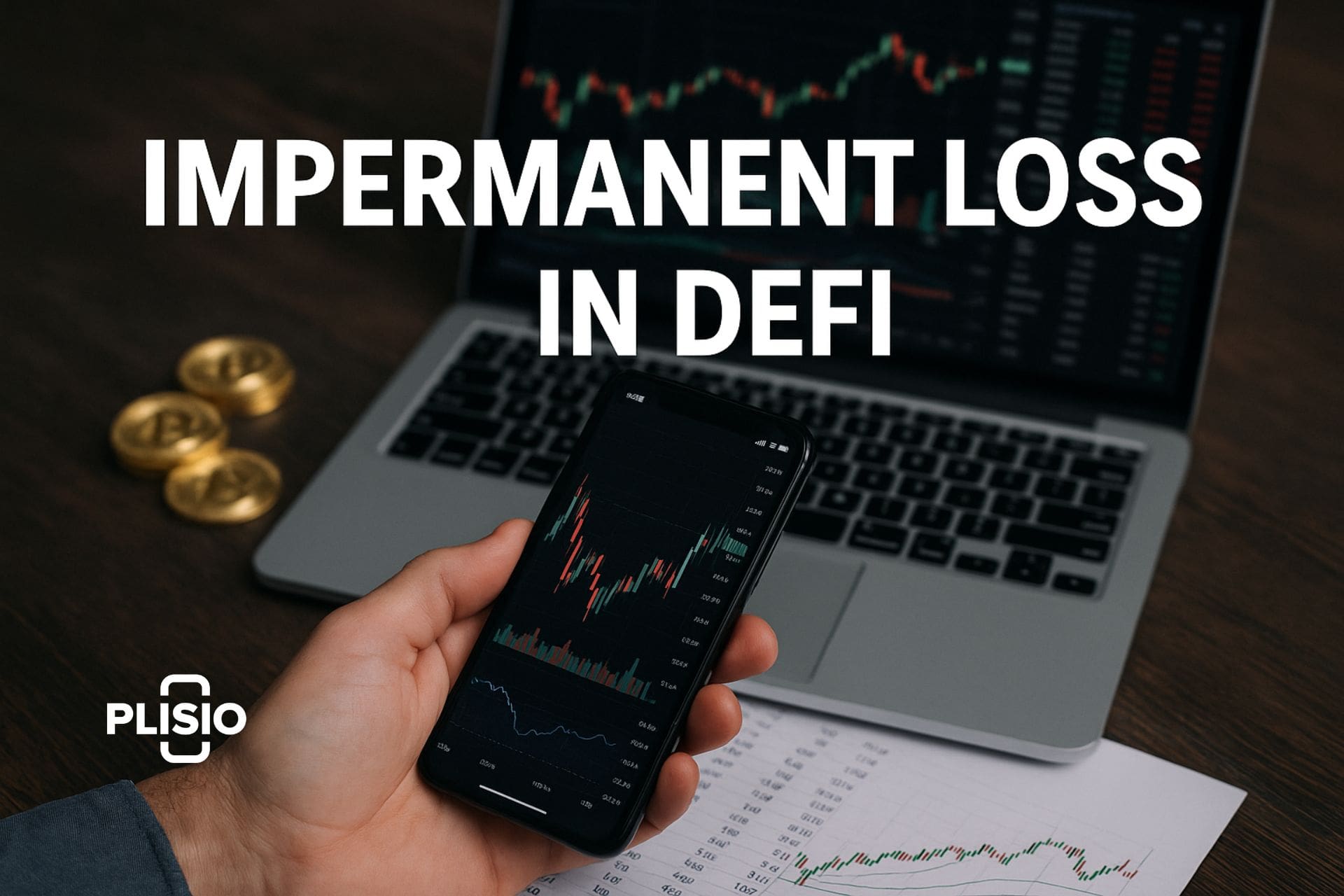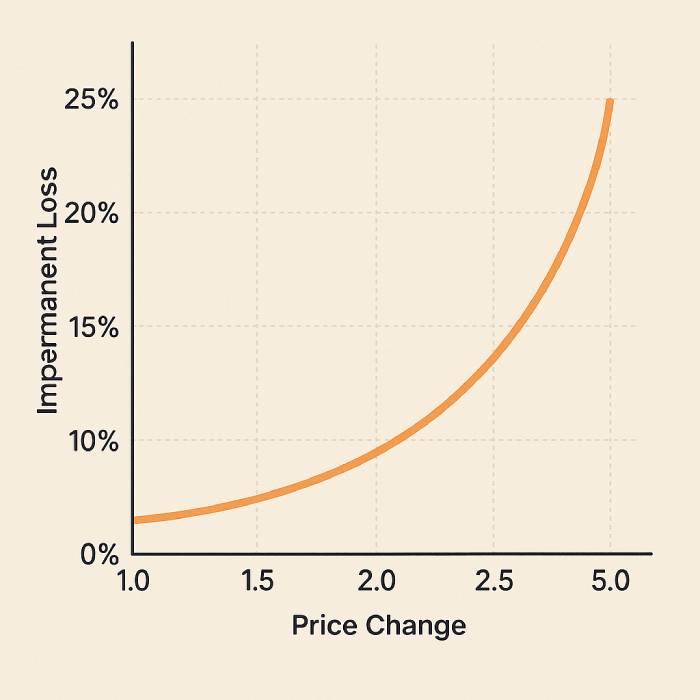Impermanent Loss in DeFi: Understanding the Basics

Decentralized Finance (DeFi) has reshaped traditional investing by removing intermediaries and introducing novel opportunities for earning yields. As of early 2025, the total value locked (TVL) across DeFi protocols has surpassed $65 billion, reflecting renewed market optimism and adoption. One of the most popular ways to earn in DeFi is by becoming a liquidity provider and participating in liquidity pools hosted by decentralized exchanges (DEXs). However, a frequently misunderstood and underestimated risk in this process is impermanent loss.
How Liquidity Provision in DeFi Works
DeFi protocols like Uniswap, Curve, and Balancer use automated market maker (AMM) algorithms instead of traditional order books. They rely on smart contract-based liquidity pools that facilitate decentralized token swaps between users.
To provide liquidity, users deposit equal values of two crypto assets—such as ETH and USDC—into a pool. These deposits allow traders to swap tokens, and in return, the liquidity provider earns trading fees. For instance, Uniswap charges a 0.3% swap fee, which is distributed among LPs proportional to their share of the pool.
These liquidity pools enable decentralized, trustless trading, but the value of the deposited assets can fluctuate significantly due to market volatility. This leads to impermanent loss.
What is Impermanent Loss?
Impermanent loss occurs when the price of the tokens in the liquidity pool changes compared to the price at the time of deposit. The AMM automatically adjusts the ratio of assets in the pool based on trades and price fluctuations. As a result, when the liquidity provider withdraws their funds, they may end up with fewer tokens than they originally deposited—despite earning trading fees.
Impermanent loss happens because your assets in the pool are constantly being rebalanced by the AMM to reflect market prices. The more volatile the token prices are, the greater the potential loss. This loss becomes permanent only when the LP withdraws their assets while the price difference still exists.
According to a 2025 study by Topaz Analytics, over 38% of active LPs on Uniswap v3 experienced impermanent losses exceeding their earned trading fees during periods of high volatility in Q4 2024.
Real User Insight: A Firsthand Experience
Lena, a long-time DeFi user from Berlin, shared her experience as a liquidity provider on a USDT/ETH pool:
“At first, I was thrilled by the 0.3% fees and daily trading activity. But after ETH surged during a bull run, my LP tokens were worth far less than just holding the original ETH. I used an impermanent loss calculator and realized I had lost nearly 18%—more than I had earned in fees.”
Her experience highlights the importance of understanding price dynamics and using available tools to estimate potential loss before committing funds.
Example: How Impermanent Loss Occurs
Suppose you deposit 0.5 ETH and 500 USDC into a Uniswap liquidity pool when the price of ETH is $1,000. You contribute $1,000 and own 10% of the pool. If the price of ETH rises to $4,000, arbitrage traders rebalance the pool by adding USDC and removing ETH.
Now, the pool holds 2.5 ETH and 10,000 USDC. Your 10% share equals 0.25 ETH and 1,000 USDC, worth $2,000. However, if you had simply held 0.5 ETH and 500 USDC, you'd have $2,500. The difference—$500—is your impermanent loss.
Calculating Impermanent Loss
You can use a basic calculator or formula to estimate your potential loss:
Impermanent Loss (%) = 2 × √r / (1 + r) - 1, where r is the price ratio of the asset.
Example with Calculator:
If the price of ETH increases 4x (r = 4):
- √4 = 2
- Impermanent Loss = (2 × 2) / (1 + 4) - 1 = 4 / 5 - 1 = -20%
| Price Change | Potential Loss |
|---|---|
| 1.5× | ~2.0% |
| 2× | ~5.7% |
| 3× | ~13.4% |
| 4× | ~20.0% |
| 5× | ~25.0% |
Why Provide Liquidity Despite the Risk?
Yield farming and liquidity mining have become popular strategies because LPs can still earn from trading fees even when facing the risk of impermanent loss. On high-volume DEXs like Uniswap, fees can sometimes outweigh the losses, especially in pools with active trader participation and minimal price changes.
In January 2025, Uniswap recorded an average daily trading volume of over $2.4 billion, with the ETH/USDC pair accounting for nearly 20% of all trades—demonstrating the potential for consistent fee generation.

Case Study: A Strategic LP Approach
Crypto investor Marcos from São Paulo shared how he strategically mitigates the risk:
“I always choose pools with low volatility pairs and set withdrawal alerts. During calm market phases, I earn stable returns. When prices begin to spike, I exit and reallocate to stablecoin pools. Timing and diversification are key.”
His disciplined approach to liquidity provision helps balance yield farming goals with the reality of market fluctuations.
How to Reduce the Risk of Impermanent Loss
- Stablecoin Pools: Pairing tokens with stablecoins reduces volatility and minimizes impermanent loss.
- Low-Volatility Timing: Provide liquidity during times of market stability to reduce rebalancing.
- Use Multi-Asset Pools: Some DeFi protocols offer pools with up to eight tokens (e.g., Balancer), which spread risk more evenly.
- Impermanent Loss Protection: Platforms like Bancor offer insurance mechanisms against impermanent loss.
- Use Calculators and Alerts: Tools like ImpermanentLoss.app and DeFiSaver allow you to simulate losses and set alerts when pool changes signal volatility.
Conclusion
Impermanent loss is an unavoidable aspect of DeFi liquidity provision—but it doesn’t have to be a dealbreaker. By understanding how impermanent loss occurs, when it happens, and how to manage it through strategic decisions, LPs can turn yield farming into a sustainable income stream.
Whether you're depositing ETH, stablecoins, or other crypto tokens into a pool, always assess the potential loss versus the rewards. A good grasp of impermanent loss and access to the right calculator tools will help you make smarter decisions in the rapidly evolving world of DeFi.




